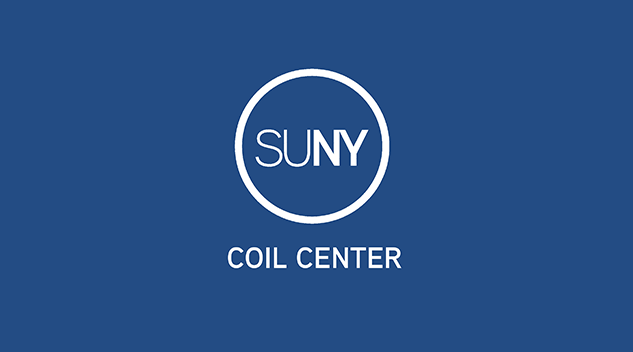|
|
INTERNATIONALIZING LEARNING IN
THE TRADITIONAL CLASSROOM
WHAT IS A GLOBAL CLASSROOM?
Global classrooms represent one form of virtual, collaborative education where students in different parts of the world can share joint learning experiences in real time. In essence, global classrooms involve developing a curriculum where instructors and students teach and learn with peers abroad using Internet-based technologies for communication. It is an innovative way to internationalize learning within the traditional classroom.
WHY GLOBAL CLASSROOMS?
Internationalizing education offers important learning outcomes that are well-recognized by small and large institutions, such as the strengthening of global fluency (University of Toronto), seeing and understanding issues from various perspectives (University of Richmond), developing cultural competencies and an understanding of one’s place in the world (St. Catherine University), situating knowledge in a broader context (Harvard), as well as cultivating active leaders and responsible citizens of a global community (Barnard). However, in many countries, including Canada and the United States, only a small portion of students (between 2-3 percent) go to study abroad and for many of them, their destinations are mostly in Europe (Institute of International Education, 2016; Association of Universities and Colleges of Canada, 2014). Global classrooms offer an accessible way to internationalize teaching and learning experiences by combining cross-cultural collaborations with technology.
|
|
BENEFITS OF GLOBAL CLASSROOMS
GLOBAL CLASSROOMS CAN BENEFIT...
Students: Students in both countries can benefit from negotiating knowledge, premises, and framings of global challenges; enhancing intercultural competencies (including languages); engaging in collaborative and field-based learning; and in e-learning, such as online research and multi-modal presentations.
Instructors: Global classrooms can benefit instructors in both countries by supporting professional development in teaching – including exposure to and practice with new pedagogies, educational systems, academic trajectories, as well as fostering future research collaborations as a result of shared teaching.
Institutions: Global classrooms can benefit institutions in both countries by offering a cost-
effective complement to student mobility, as well as creating pathways to international exchange and study abroad.
|
|
STARTING YOUR OWN GLOBAL CLASSROOMS
Source: Center for Collaborative Online International Learning. (2011). Faculty Guide for Collaborative Online International Learning: Course Development. To access the latest version of the Faculty Guide, contact coilinfo@suny.edu for a free copy.
GETTING STARTED:
- Developing your course content: Maximize the benefits of global classrooms by developing a course in which students’ learning experiences will be enhanced through interacting and collaborating with peers in another geographic location. The course should enable the sharing of multiple or different cultural perspectives and offer the space for direct engagement of international students.
- Determining your institutional resources: Identify what technological and teaching resources are available at your institution to support your global classroom initiative. It is important to gather the support of the administration such as your department chair, provost, and dean.
- Finding a partner: Find another instructor to form a partnership and co-teach the course with you. It is important to form a partnership with an instructor with whom you share the same goals and a sense of trust.
To begin your search, determine what geographic global perspective(s) would best suit your course content. Determine whether you have any colleagues or potential connections in those geographic areas. You may also consider finding an instructor from an institution that has an existing partnership or agreement with your institution – you may be able to find more information by contacting the international office at your institution. It may also be helpful to rely on existing networks such as academic communities or disciplinary associations that may be able to help you connect with a colleague in another geographic location. Many faculty find that their disciplinary conferences provide ideal points of contact with potential partners to co-teach a global classroom.
Additional resources: Klein, J. D. (2016). Building Partnerships Outside the Classroom That Work. Education Week.
WORKING TOGETHER:
- Developing your partnership: Communicate with your partner to work through the details of your collaboration. This can be done through Skype, by phone, in-person, or by e-mail. It is important to determine a timeline for your collaboration, and consider issues such as time zone differences and available technological resources. Have discussions about the course content and determine a set of shared learning objectives and discuss how you intend to assess learning performances and outcomes.
- Navigating potential differences in institutional cultures and academic standards: Recognize that there may be underlying differences between your institutional teaching culture and your partner’s. It is important to develop a mutual understanding of accepted institutional practices, including an understanding of what is normally expected to take place in each classroom (e.g. number of hours of reading expected of students).
- Navigating issues of process: The following are ten recommendations for navigating issues of process:
- Arrange a face-to-face meeting with your faculty partner, if possible
- Foster honesty and open communications
- Get a real commitment from your partner and your college
- Envision your course as a forum for developing intercultural competence
- Develop actual course and module lesson plans
- Test the technology
- Engage students with icebreaker activities to get to know each other
- Have at least one cross-border collaborative assignment
- Provide the opportunity for critical reflection
- Expect the unexpected
There is a plethora of literature and practical tools available in our Tools & Resources Library to help guide you in your collaboration with your partner.




